
We spoke with the general manager of Marvel Games for insight into several of the big projects the team has been working to bring to life, and where the games division is headed next.
Our recent issue of Game Informer included a big look at some of the major game projects currently in development connected to Marvel Games. As the entity overseeing and partnering with studios to bring those efforts to life, Marvel Games has an impressively wide selection of connections across the games industry, with games the run the gamut in terms of genre, gameplay style, and artistic direction.
We had a chance to ask Haluk Mentes, General Manager of Marvel Games, about several of the games we featured in our magazine rundown, as well as briefly ask about Marvel Games’ intentions as it continues to expand in new directions.
Check out our full interview below. Subscribers can dive into full in-depth features for the games discussed below in our digital or print issue 372, featuring The Outer Worlds 2 on the cover.
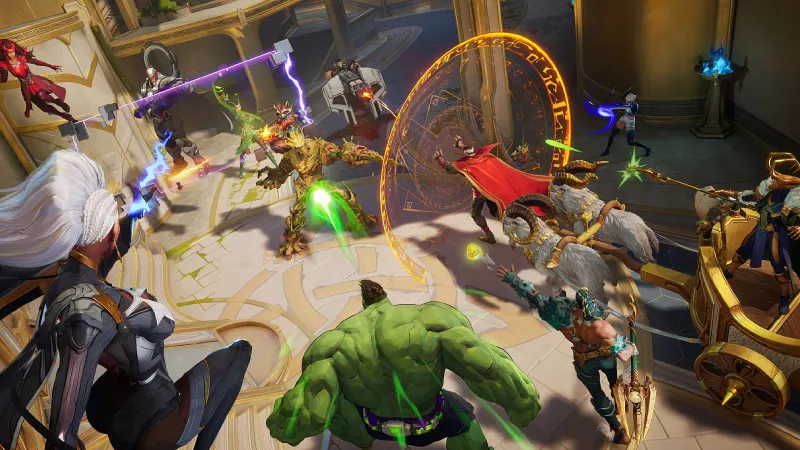
Marvel Rivals
Marvel Games has a number of projects in the works right now, and with several different developer partners. What have been some guiding principles to those collaborations, in particular as it relates to letting developers find some freedom to shape these familiar characters into new and interesting genres or variations?
Haluk Mentes: So glad you asked this. Our north star is deceptively simple: make great games that are authentic to Marvel, whether it’s on console, PC, mobile or VR.
The challenge is more complex: authenticity doesn’t necessarily mean one-to-one fidelity to source or reference material, whether it’s comics or animation or movies. It’s much deeper in that we allow our collaborating teams to reimagine “familiar yet original” incarnations of our characters based on their own creative DNA, whether it’s Insomniac Games with Marvel’s Spider-Man or Marvel’s Wolverine, NetEase with Marvel Rivals, Motive Studio with the forthcoming Iron Man game, Arkane with Marvel’s Blade, and many more. We absolutely do not want to be derivative. Otherwise, what’s the point of working with some of the best talent out there?
In full transparency, our games can only achieve the necessary level of creativity when we as Marvel Games have 100% cultural alignment with our collaborators. In fact, we actively seek people who have the same passion and ambition as us, who dream the same dream, as in: “wouldn’t it be cool if we made THIS character in THIS genre in THIS style?,” and then we let them, for the lack of a better word, cook. We do actively help, guide, and enhance, but it’s unmistakably their voice.
There have been so many moments where creative teams on both sides have said: “We’ve been dreaming of this all our lives.” That’s when you know magic is about to happen.
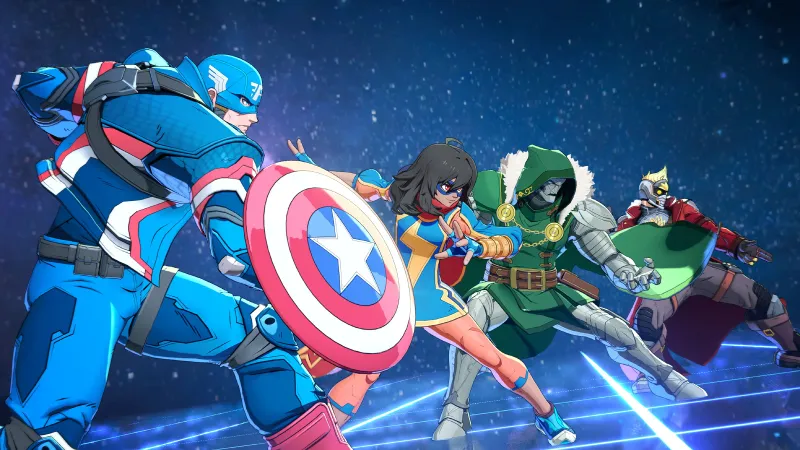
Marvel Tōkon Fighting Souls
Marvel Tōkon Fighting Souls is distinct among many historical Marvel fighting games, as it is squarely focused on Marvel characters. What was the working relationship like with the Arc System Works team, and what has it been like seeing the studio explore a Japanese art-and-culture-informed take on some of these classic comic characters?
HM: Others have said it better, but I’ll repeat here: working with ArcSys and PlayStation has been a dream. From inception, the goal was to reinstate Marvel as a pillar of the fighting game community, and to do it with a unique, anime-inspired art-style and some of the best tag-team fighting mechanics out there. From the get-go, we collectively started pushing the envelope in terms of design to bring out that unmistakable ArcSys identity. I particularly love how Iron Man looks in the game – super unique but instantly recognizable. We’re incredibly proud of Marvel Tōkon and I think players are in for a real treat when it comes out next year.
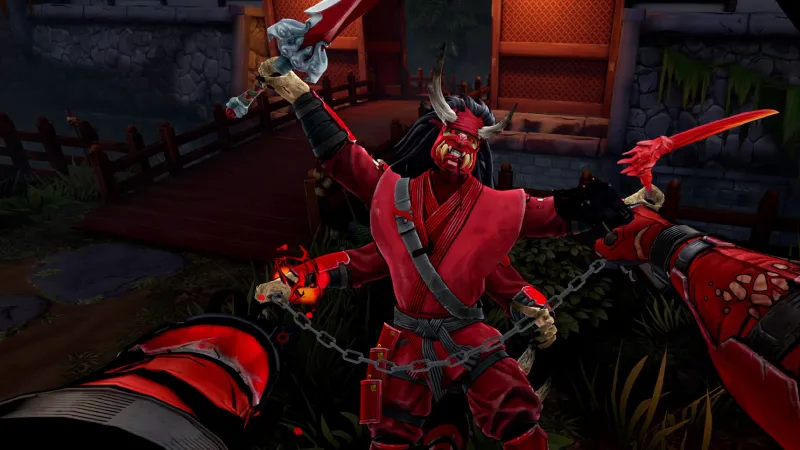
Marvel’s Deadpool VR
Deadpool VR provides a chance to bring a largely comedic character into the VR gaming space. Given that Deadpool is traditionally irreverent, mature in tone (or immature, depending on perspective) and fourth-wall-breaking, how did Marvel Games approach approvals for jokes and visuals in that game?
HM: It speaks yet again to our yearning for authenticity. We were culturally aligned with the teams at Twisted Pixel Games and Oculus Studios from the get-go and all agreed that we simply wouldn’t make the game if we weren’t going to all-gas-no-brakes deliver on Deadpool, which encompassed everything from the frenetic gameplay to the comedic, mature, fourth wall-breaking tone. Filtering the “Merc with a Mouth” was never an option, as it would betray what makes the character unique. Then there’s the added benefit of working in VR: the humor and gags hit harder when it’s literally in your face. The result is a game that’s unhinged, slightly manic, and, most importantly, fun.
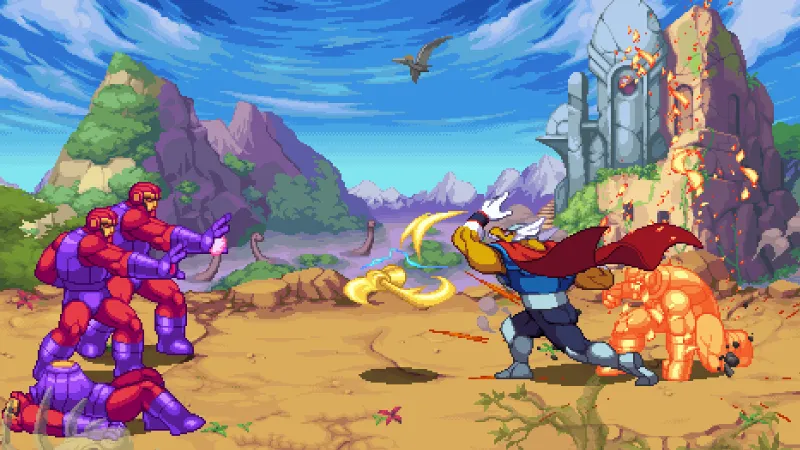
Marvel Cosmic Invasion
Marvel Cosmic Invasion focuses on bringing the Marvel characters into a decidedly old-school retro aesthetic. Why was that setting attractive? Were there older Marvel video games that helped inform the desire to make that project happen?
HM: We all grew up with these games, so it was a no-brainer! My own first-ever Marvel game was X-Men: Children of the Atom, followed by Punisher and X-Men Arcade, and I didn’t even grow up in the United States. The rest of our team has similar memories and origin stories, whether at the arcade or at home. What we now call retro games were pretty current in their time and carried the torch for Marvel where comics didn’t always permeate. Add to that the amazing opportunity to work with Dotemu and Tribute to help make Marvel Cosmic Invasion after all the hours poured into TMNT: Shredder’s Revenge, and it was truly yet another “this has to happen” moment.
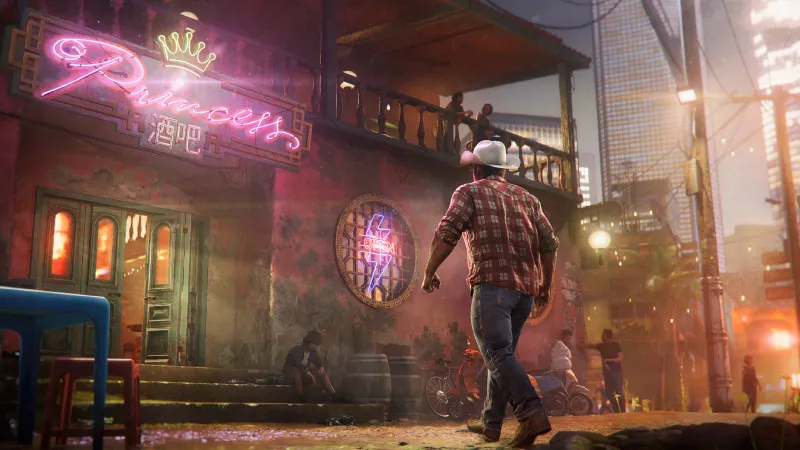
Marvel’s Wolverine
Given the breadth of announced projects on the way for Marvel Games in the coming months and years, can you share anything about the philosophy guiding Marvel Games in the interactive games space? What factors help to inform whether you want to move forward on a project?
HM: We’ve spent upwards of a decade building the Marvel Games portfolio, and it’s been fun watching the tapestry unfold game-by-game and to see players’ reactions. There’s been a tremendous level of thought that went into the games we decided to pursue. We’ve almost instinctively operated from this place of “no regrets,” meaning if we projected ourselves 20 years into the future and looked back, we don’t ever want to say “we should’ve made that game” or “why did we not push harder to make this happen?”
There’s a great sense of responsibility at play here: Marvel is an almost 90-year-old creative brand, yet it’s as fresh as ever because during all that time, each new generation grew up with Marvel, ultimately became creators and left their mark, and then passed the torch to the next generation. We happen to be here now, carrying this torch, and we feel we have a debt of gratitude to deliver for the players and future creators, whose first encounter with Marvel might well be one of our games.
We also actively seek collaborators that want to take on the same mantle. As is usually the case, once we complete a project together, they, too, become “Marvel.” Marvel’s Wolverine with our dear friends at Insomniac Games is perhaps the epitome of this philosophy. We have been working together for more than a decade and developed such a shorthand across multiple Marvel’s Spider-Man games that when the time finally came to bring Logan back in spectacular and visceral fashion, it was obvious to everyone on our team that Insomniac was the perfect choice. It was our shared culture and values that brought us together, and we’re so proud to continue collaborating for many years to come.
